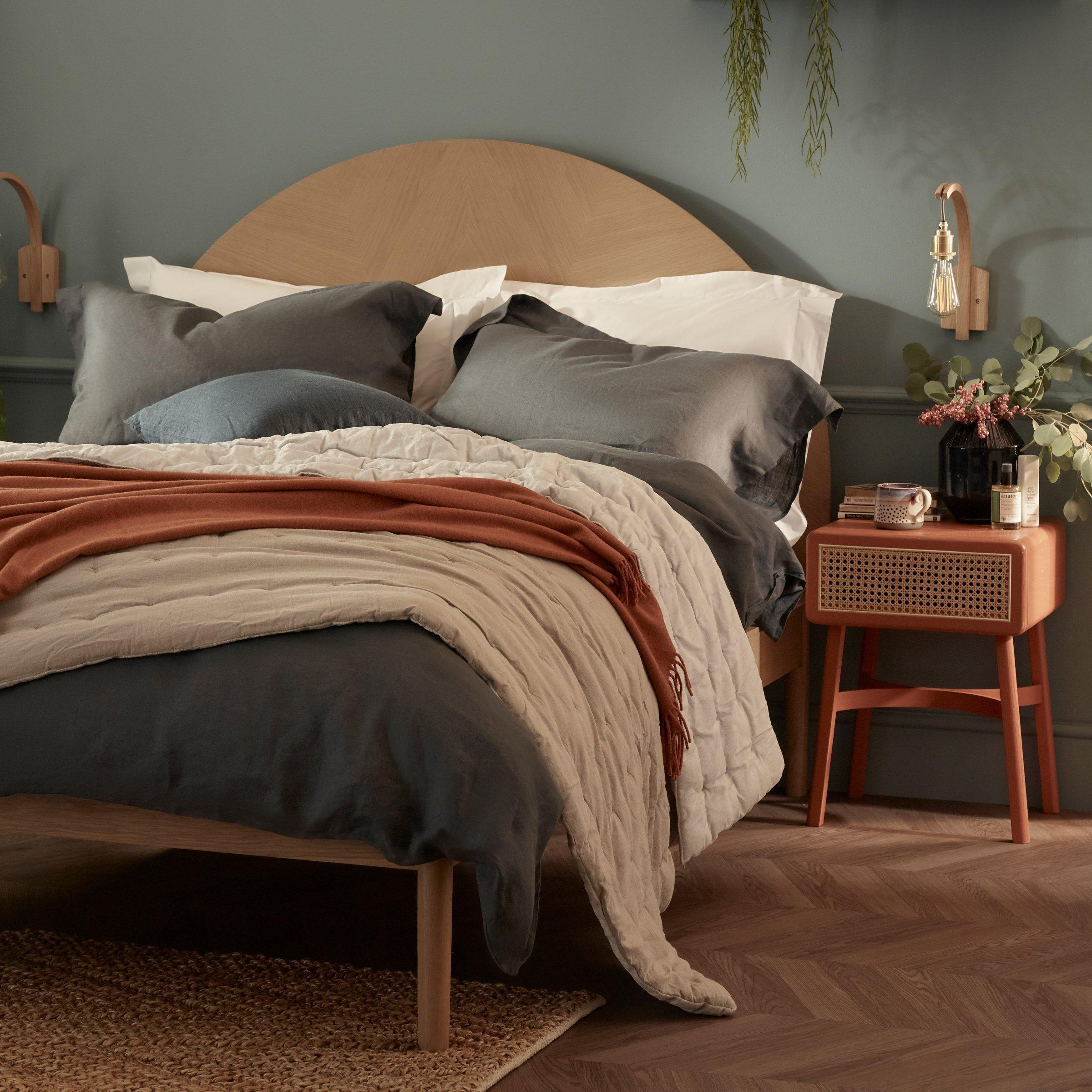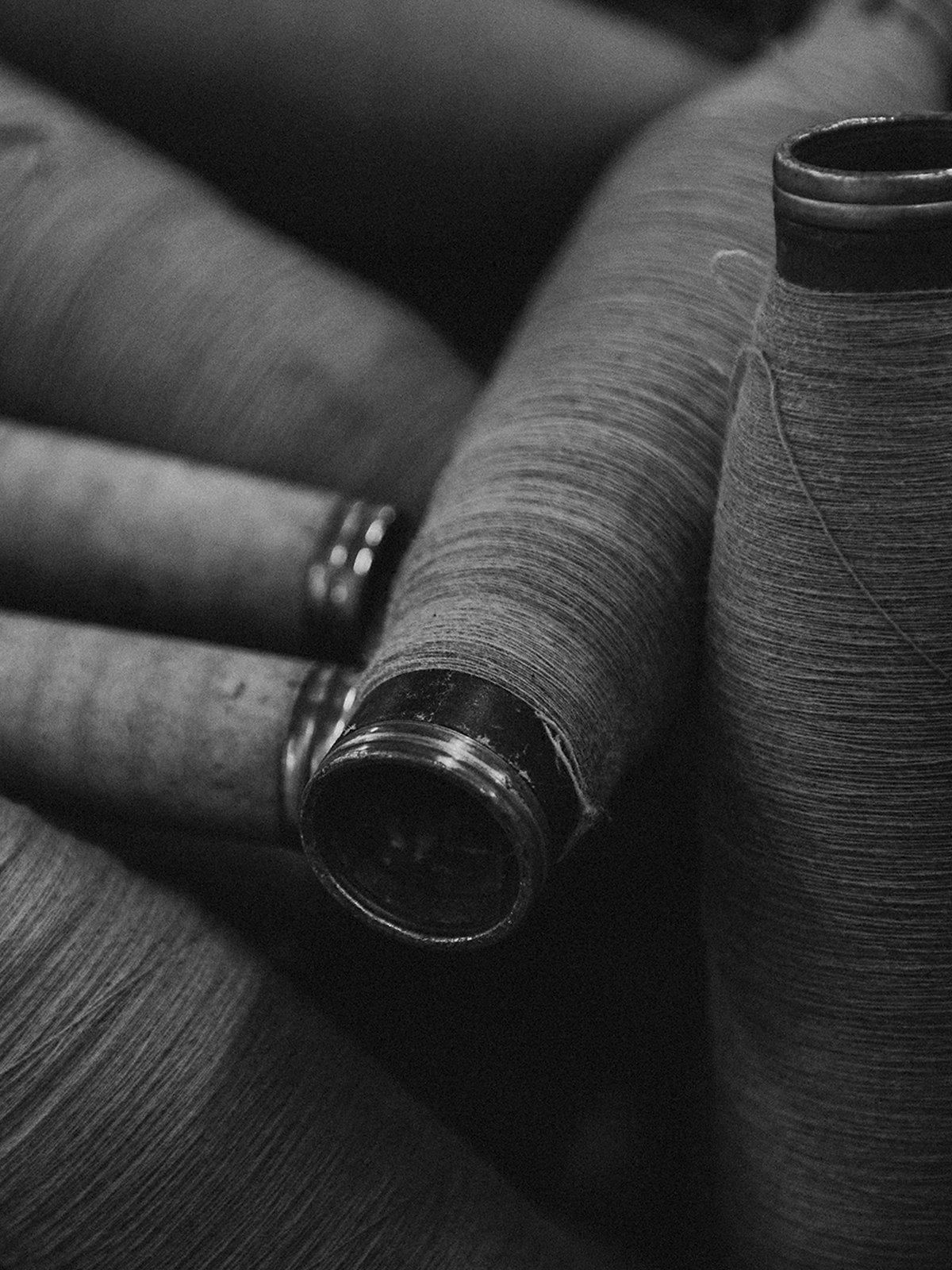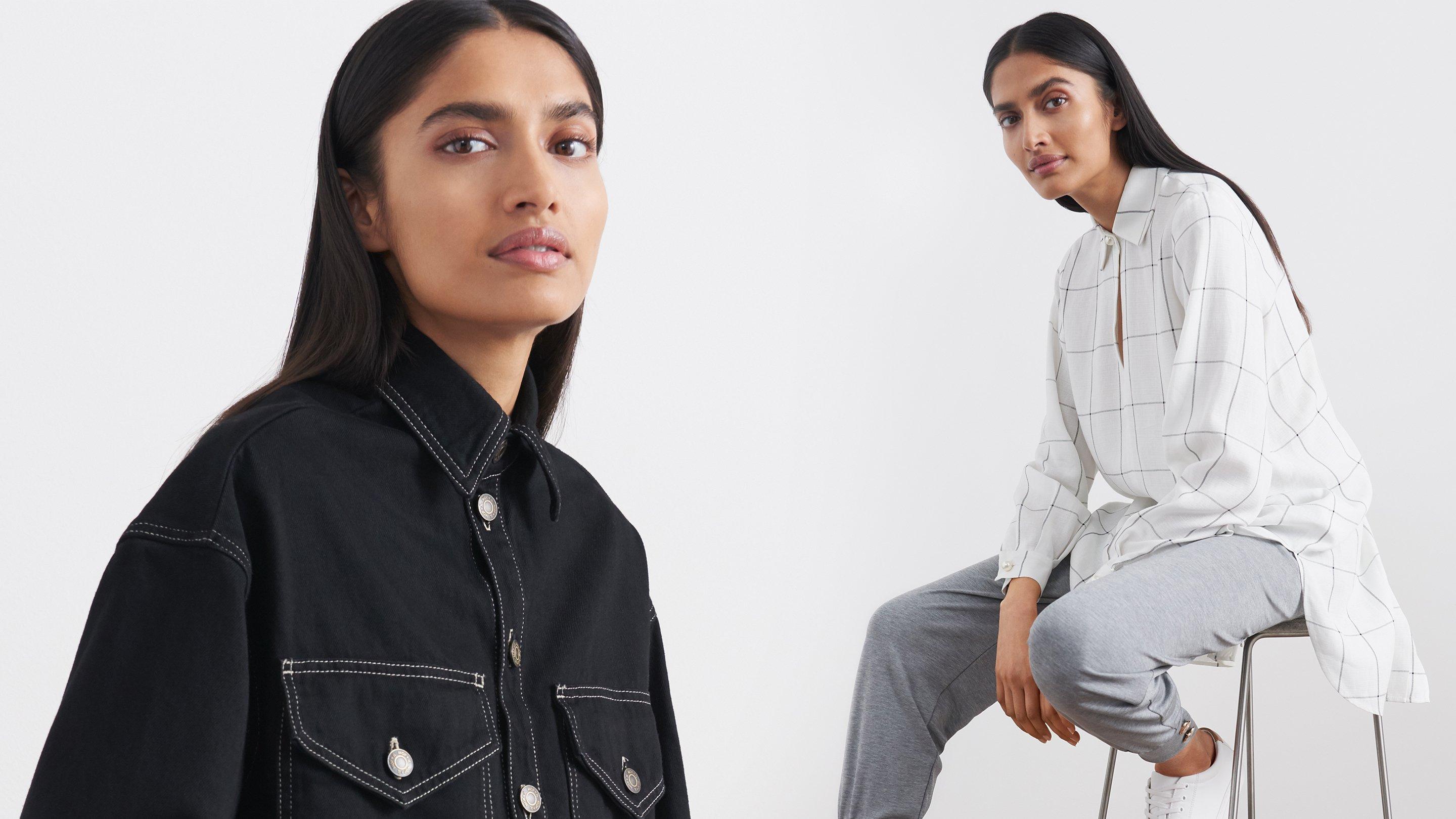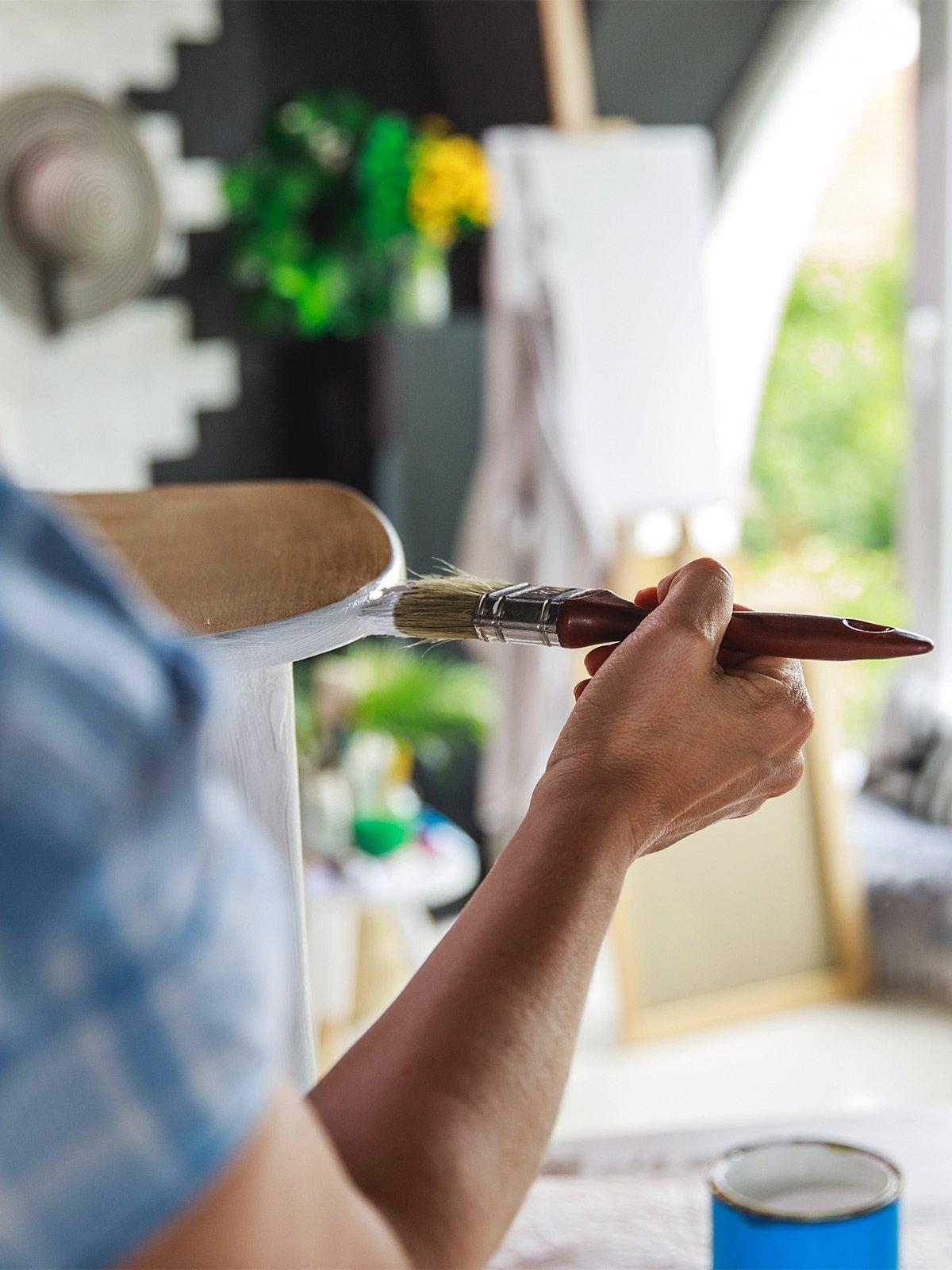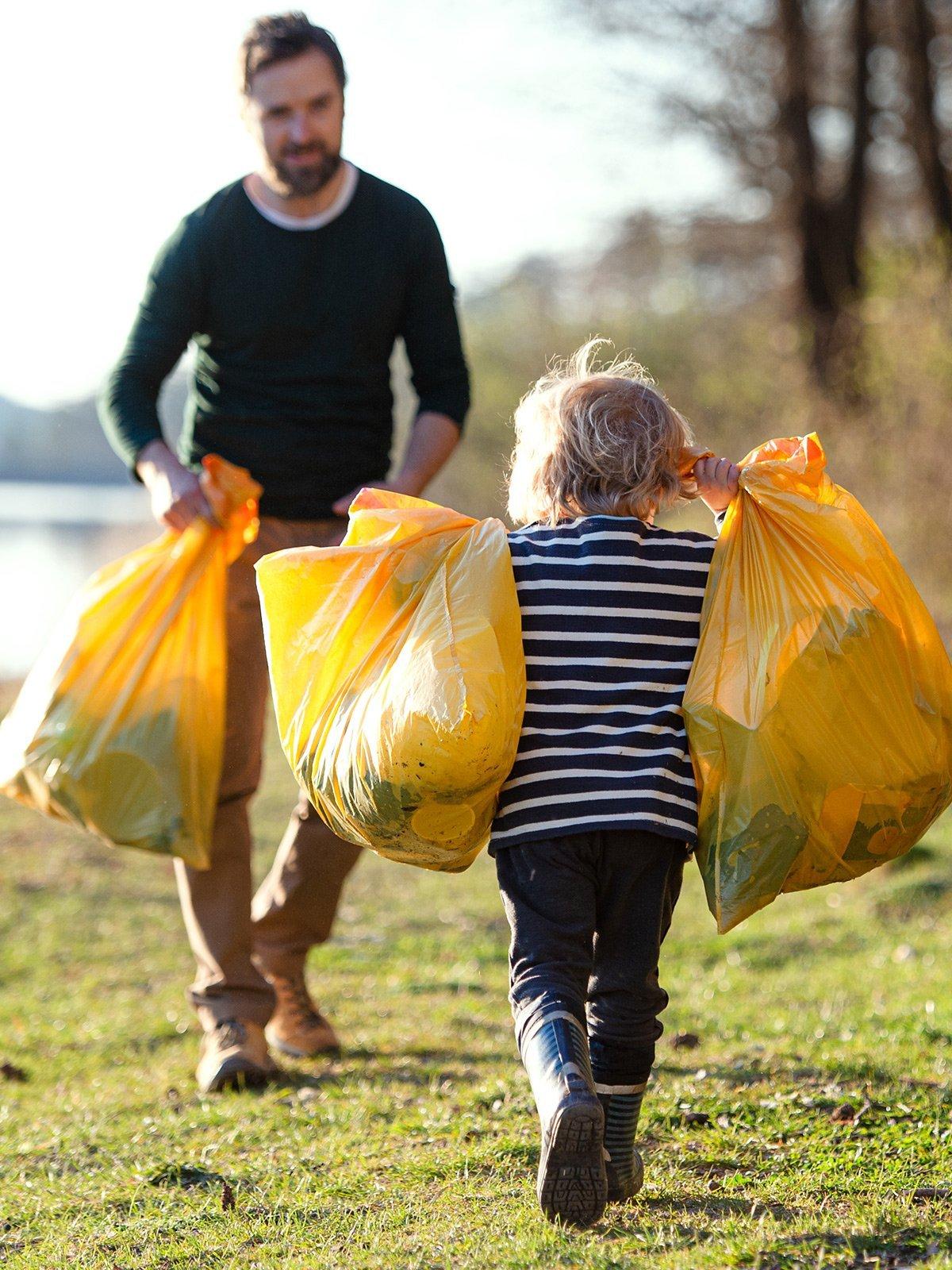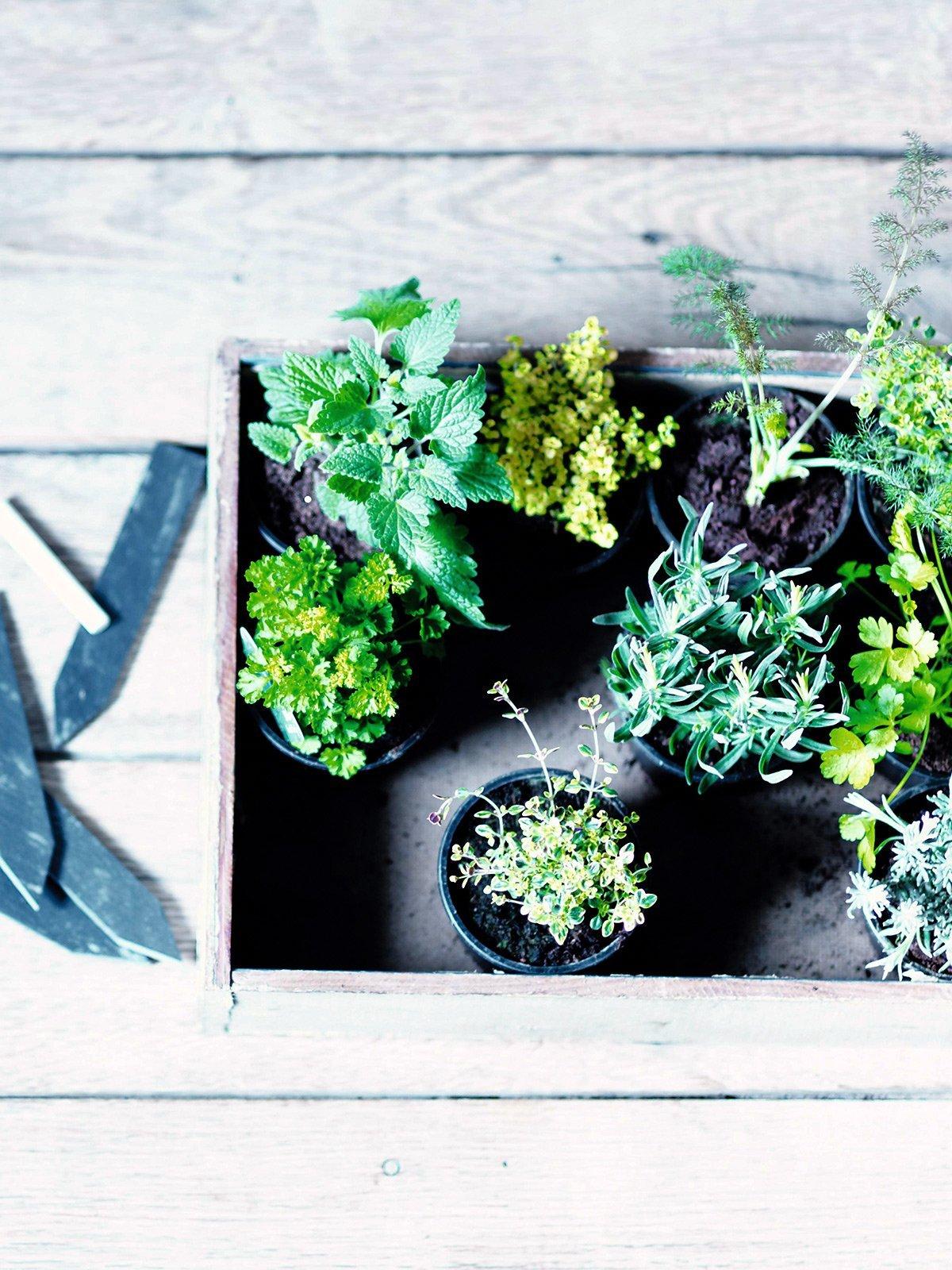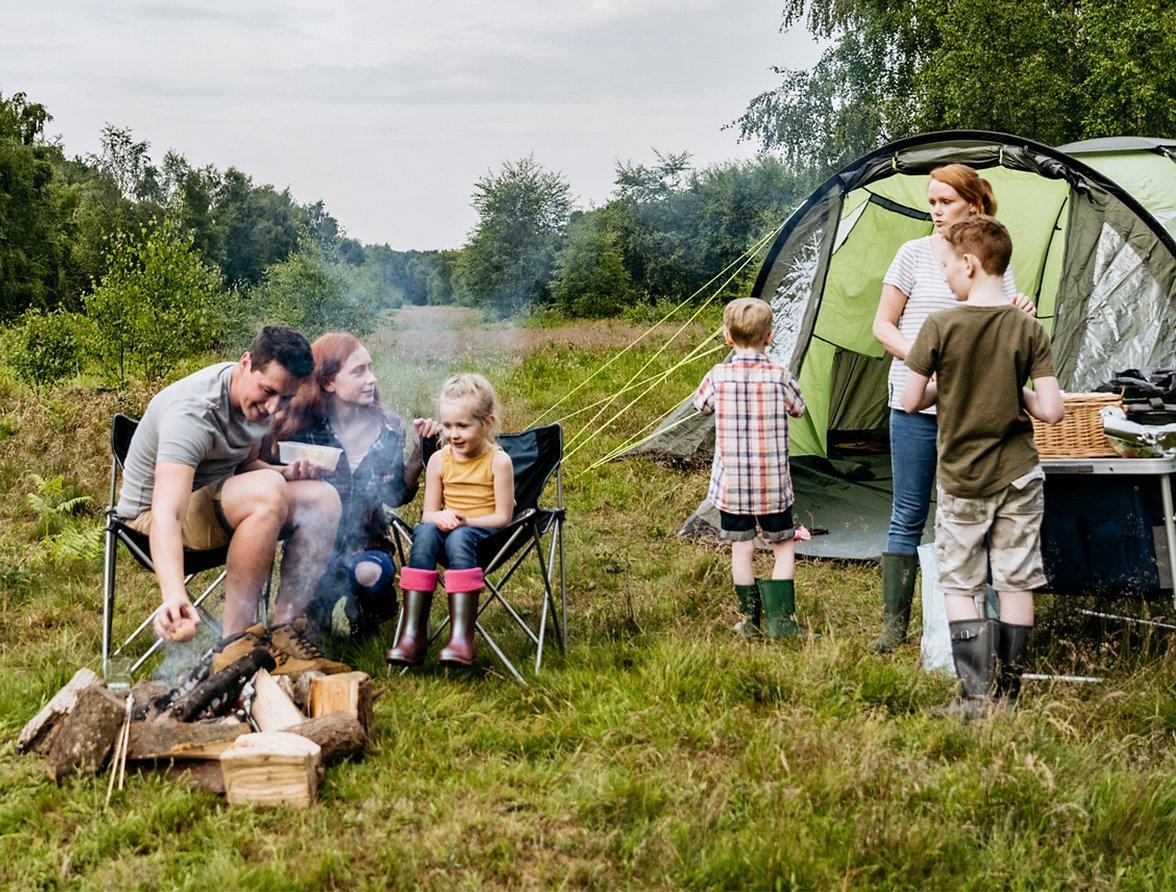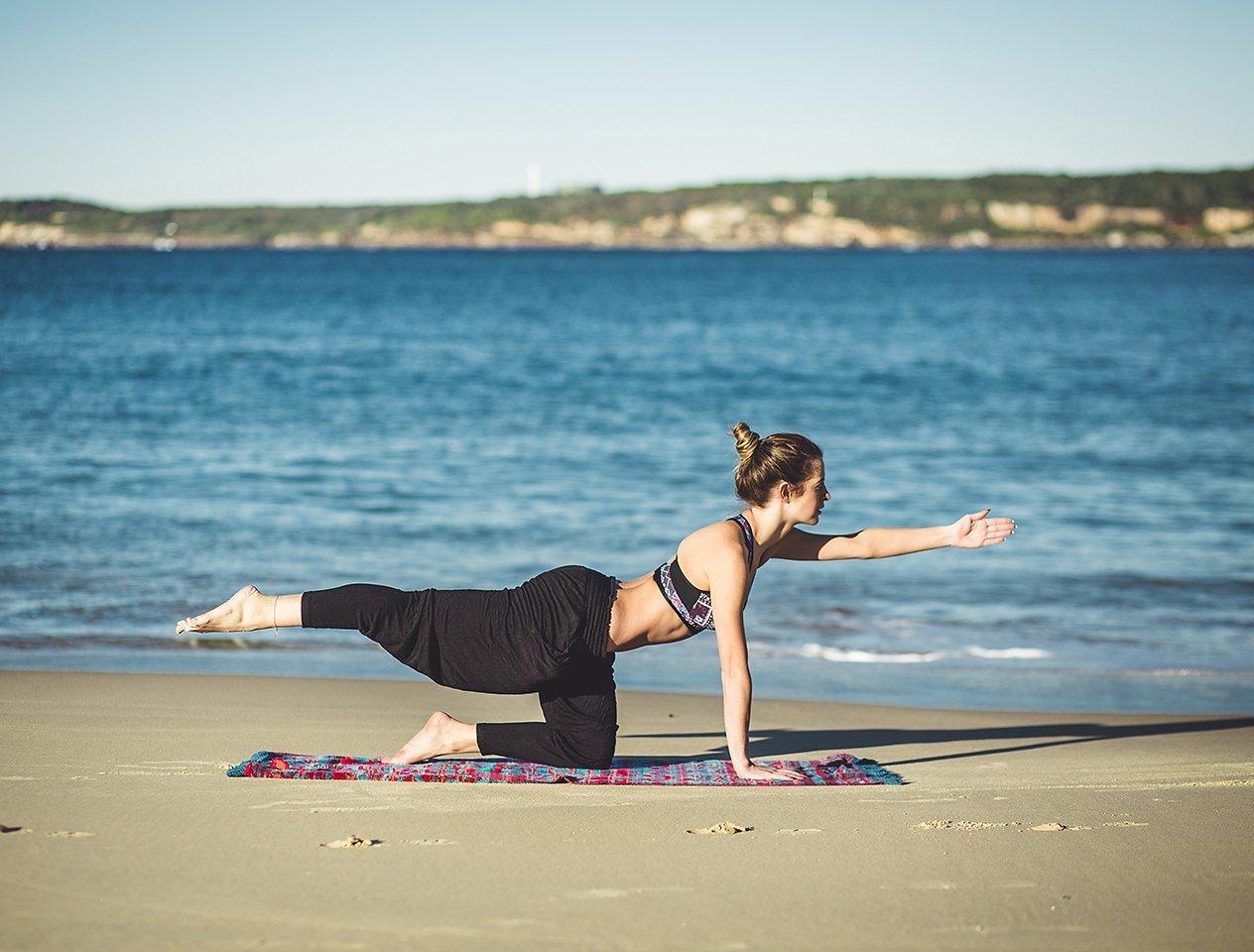Want to buy less but buy better? Read on for how to shop smart and use in-house initiatives, like our recycling schemes, to your advantage.
Many of us are seeking new ways to reduce our carbon footprint and cultivate a more sustainable way of life. ‘At John Lewis and Waitrose, we’re continually striving to provide our customers with fantastic products and services to enable more sustainable and healthy lifestyles,’ says Marija Rompani, Ethics & Sustainability Director for the John Lewis Partnership.
John Lewis is a proud member of Better Cotton, which is committed to improving cotton farming practices globally. We also have many in-house initiatives, such as sofa recycling, an electrical goods take-back scheme, clothing rental partnerships and easy ways to recycle your clothes and beauty packaging.
Below our experts explore seven simple lifestyle tweaks that will benefit the environment and enrich your life. Together, we can do better.
1. Buy better
The first step is becoming a more conscious shopper – think, for example, FSC®-certified furniture (which means that the wood used in said furniture has met the stringent sustainable sourcing requirements of the Forest Stewardship Council®) or, if you are buying for children, start with our sustainable kids’ edit.
Spend time considering every purchase you make. Opt for responsibly sourced beauty products and classic, well-made, more sustainable wardrobe staples that you’ll cherish forever – look to brands such as Aesop, Baukjen, Rituals, Mother of Pearl and Ninety Percent for inspiration.
2. Make it last
Learning to make the most of what you have is key. Take a long, hard look at everything in your wardrobe. Try everything on and see what can be kept, altered, mended, sold, recycled or given away. You’ll probably find you have more than you realised.
Simple repairs and alterations can be carried out at home, by hand or with the help of a sewing machine (see our sewing machine buying guide) – YouTube is a great place to find step-by-step tutorials. If you’re less confident, or short on time, many local tailors and alterations shops offer a repairs service – perfect if you need a zip replaced or a hem taken up in a hurry.
To help extend the life of your clothing, you should try to only wash when dirty. The most important thing is to wash according to the care label! The washing instructions can vary depending on style, fibre and fabric construction, but all retailers conduct testing to ensure that the products perform to the washing instructions printed on the label.
3. Swish, swap, recycle
We all need to declutter from time to time, but as a nation we send more than 300,000 tonnes of wearable clothes to landfill each year. Swishing (another name for clothes swapping) is a fun way to liberate old favourites – and discover new ones. Swap with friends or try an online clothes exchange.
Renting is a great alternative to buying. Check out our recently launched partnership with clothing rental service Hurr and The Little Loop, a children’s clothes rental and swapping initiative.
At John Lewis, we're offering small initiatives that can make a big difference. Take FashionCycle, a sustainability initiative exclusively for My John Lewis customers across the UK. The idea is that when you return five items of clothing to be resold or recycled, we give you £5 off your next fashion or home purchase.
Or why not give your old sofa a new life through our Sofa Re-use scheme. We’ll not only pick up your old sofa but we’ll work with The Reuse Network to donate it to another family in the UK who needs it or dispose of it in line with the POPs (persistent organic pollutants) regulation if it is not reusable.
Waste has a very serious impact on our environment so recycling and disposing of items responsibly is crucial to the health of our planet. Our mattress and divan recycling service is a stress-free solution to avoid sending larger household items to landfill. We’ll not only collect your old mattress from your home, but we’ll take it to be recycled so that the materials can be reused.
4. Upcycle your trash (into treasure)
But before you recycle, ask yourself: could you upcycle instead? ‘The world is your oyster when it comes to upcycling,’ says interior stylist Emma Morton-Turner, founder of Inside Stylists. ‘It’s not just that you’re not adding to the landfill problem – you’re creating a new item for your home that will fit perfectly with your decor.’
If you’re new to upcycling, take a look at TV shows like The Repair Shop and books such as Sara Bird’s Home for the Soul for inspiration, and search YouTube for tutorials on technique. ‘Spray paint a few different candlesticks the same colour and team them with contrasting coloured candles,’ Emma suggests. ‘Or you could cover mismatched magazine files with wallpaper, or paint wooden coat hangers and decorate them with pressed flowers. Just have fun!’
Got an old desk or chest of drawers crying out for a makeover? ‘Paint your piece all over using chalk paint,’ says Emma. ‘Leave to dry, then paint a second colour over the top. Use a kitchen scourer to gently rub over the edges and corners. This will remove the top layer of paint for a vintage effect.’
Looking for more ideas? Don’t miss our crafting tutorials which include how to make a knotted plant hanger – the perfect way to use up old wool.
5. Clean up
More than two million pieces of litter are dropped in the UK every day, killing millions of animals each year, dampening community spirit and creating hazards for physical and mental health.
Could plogging be the answer? Blending ‘jogging’ with ‘plocka upp’ – Swedish for ‘pick up’ – plogging is the Stockholm-born trend for combining running with litter picking. It’s a winning combination for your health and the environment. Grab a bin bag, some protective gloves and your trainers and you’re good to go – why not start small and commit to picking up (and recycling) just two pieces of rubbish next time you go out for a run or walk?
Or why not help to ‘clean and green’ your local area by becoming part of a community gardening or tree planting scheme?
6. Rewild your space
The numbers of once familiar birds and butterflies have more than halved in recent decades, but with a few simple tweaks, you can turn your own garden or outdoor space into a haven for nature. ‘Gardens can provide a crucial lifeline for struggling species,’ says Anna Feeney, PR Executive at the RSPB. ‘To that hungry butterfly or weather-beaten bird looking for a place to roost, just one garden can make all the difference.’
A bird bath will keep feathers in tip-top condition for flying and provide valuable drinking water, while a mud patch can help local house martins build cosy nests. ‘An upturned bin lid stabilised with a rock can make a great bird bath – you can even upcycle an old bucket or sink to make a pond,’ suggests Anna.
You could also hang a nest box or bird feeder, build a bug hotel, put out scraps (remembering to check they’re safe for birds first), or hang apples or suet balls from your trees. Check the RSPB website for more ideas on creating a wildlife-friendly garden.
7. Grow your own
Growing your own food is a great way to reduce the carbon footprint associated with importing fresh produce. Opting for more seasonal, plant-based meals over meat is one of the best things that you can do for the environment as it can help conserve land, tackle water scarcity and reduce greenhouse gas emissions.
Growing plants can help hungry local wildlife, too. ‘It’s immensely satisfying to see birds eating off plants you’ve grown,’ says Anna. ‘And a lot of bird-friendly plants are also good for pollinators. Sunflowers provide a tasty meal for bees and, later in the summer, the drying seedheads become a feast for greenfinches and goldfinches.’
If you don’t have room for a vegetable patch, why not grow fresh herbs or pollinator-friendly flowers in a window box? ‘You can grow plants pretty much anywhere, regardless of the size of your outdoor space,’ says Anna. You’ll find lots of wildlife-friendly plants at Waitrose Garden. If you’re local to Hampshire, why not visit the Longstock Nursery on Leckford Estate, the Waitrose & Partners farm, for horticultural advice from our experts?
Making your own bread is not only a chance to get creative but it’s a way to help reduce the environmental cost of your food. By sourcing your flour from a local mill or farm shop, you can minimise the impact of your loaf. The Longstock Park Farm Shop stocks a variety of delicious fresh farm-grown, local and regional produce including flour, rapeseed oil, sparkling wine, apple juice, cider and mushrooms.
Read more about Ethics & Sustainability at the John Lewis Partnership here

